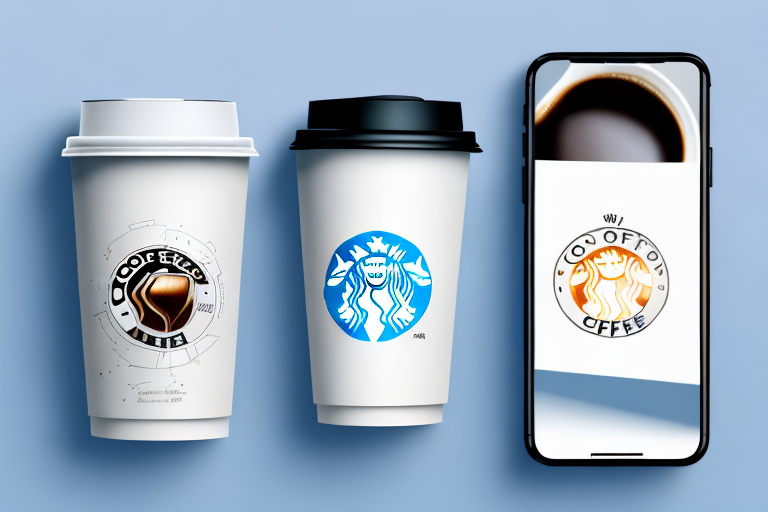In the realm of marketing, brand collaborations represent a strategic alliance between two or more brands for the purpose of creating a unique product or service offering, which would not have been possible for each brand to achieve independently. This approach, also known as collaborative marketing, is increasingly being adopted by brands across industries as a means to leverage each other's strengths, reach a wider audience, and generate greater value for their customers.
Brand collaborations can take various forms, ranging from co-branded products and services, joint marketing campaigns, to shared retail spaces and more. The key to successful brand collaborations lies in finding the right partner with complementary strengths and shared values, and working together towards a common goal. In this comprehensive glossary article, we will delve deep into the concept of brand collaborations, exploring its various aspects in detail.
Understanding Brand Collaborations
At its core, a brand collaboration is a strategic partnership between two or more brands that come together to create a product, service, or experience that is mutually beneficial. This collaboration can be between brands within the same industry (also known as intra-industry collaboration) or across different industries (inter-industry collaboration).
Brand collaborations are not limited to product or service creation. They can also involve joint marketing campaigns, shared retail spaces, and other forms of partnership that leverage the strengths and resources of each brand. The ultimate goal of brand collaborations is to create greater value for customers, which in turn drives growth for the collaborating brands.
Benefits of Brand Collaborations
Brand collaborations offer a host of benefits for the participating brands. Firstly, they allow brands to tap into each other's customer base, thereby expanding their reach and exposure. This can be particularly beneficial for smaller or newer brands that are looking to increase their visibility in the market.
Secondly, brand collaborations can lead to cost savings, as brands can share the expenses associated with product development, marketing, and distribution. Furthermore, by combining their resources and expertise, brands can create unique offerings that differentiate them from their competitors, thereby enhancing their competitive advantage.
Challenges of Brand Collaborations
Despite the numerous benefits, brand collaborations also come with their own set of challenges. One of the main challenges is finding the right partner. The success of a brand collaboration largely depends on the compatibility of the partnering brands in terms of their values, target audience, and strategic objectives.
Another challenge is managing the collaboration effectively. This involves clear communication, coordination, and conflict resolution among the collaborating brands. Furthermore, there is also the risk of diluting one's brand identity or confusing customers if the collaboration is not well-executed.
Types of Brand Collaborations
Brand collaborations can take various forms, depending on the objectives and resources of the collaborating brands. Here are some of the common types of brand collaborations:
Co-branded Products or Services
This is perhaps the most common form of brand collaboration, where two or more brands come together to create a new product or service. This type of collaboration allows brands to leverage each other's strengths and create a unique offering that provides greater value to customers.
For example, a fashion brand and a tech company might collaborate to create a smartwatch that combines style with functionality. Or a food brand and a fitness brand might team up to create a range of healthy snacks.
Joint Marketing Campaigns
Another common type of brand collaboration is joint marketing campaigns. In this case, two or more brands join forces to promote a product, service, or cause. This type of collaboration can be particularly effective in reaching a wider audience and generating greater impact.
For instance, a travel company and a hotel chain might launch a joint marketing campaign to promote a travel package. Or a beauty brand and a charity organization might collaborate on a campaign to raise awareness and funds for a social cause.
Key Elements of Successful Brand Collaborations
While brand collaborations offer numerous benefits, their success largely depends on several key elements. These include:
Compatibility
The first and foremost element of a successful brand collaboration is compatibility. This refers to the alignment of the collaborating brands in terms of their values, target audience, and strategic objectives. Brands that share similar values and cater to a similar target audience are more likely to succeed in their collaboration.
Furthermore, the collaboration should also align with the strategic objectives of each brand. For instance, if one brand's objective is to expand its customer base, while the other brand's objective is to enhance its product portfolio, then their collaboration might not yield the desired results.
Clear Communication
Clear and effective communication is another crucial element of successful brand collaborations. This involves defining the roles and responsibilities of each brand, setting clear expectations, and maintaining regular communication throughout the collaboration process.
Moreover, it is also important to communicate the collaboration to the customers in a clear and compelling manner. This includes explaining the rationale behind the collaboration, the benefits for the customers, and how the collaboration aligns with the brands' values and identity.
Examples of Successful Brand Collaborations
Over the years, there have been numerous examples of successful brand collaborations that have resulted in unique product offerings, increased brand visibility, and greater customer value. Here are a few examples:
Nike and Apple
One of the most notable examples of brand collaboration is between Nike and Apple. The two brands collaborated to create the Nike+ iPod, a product that combined Nike's expertise in sportswear with Apple's expertise in technology. The result was a product that allowed users to track their running progress and listen to music, thereby enhancing their workout experience.
This collaboration was a win-win for both brands. For Nike, it allowed the brand to tap into Apple's tech-savvy customer base and enhance its product portfolio. For Apple, it allowed the brand to expand its iPod market and reinforce its image as an innovative technology brand.
H&M and Designer Brands
Another example of successful brand collaboration is between H&M and various designer brands like Versace, Balmain, and Alexander Wang. These collaborations involved the creation of limited-edition collections that combined the designer brands' high-fashion aesthetics with H&M's affordability.
These collaborations were successful in generating buzz and excitement among customers, thereby driving traffic and sales for H&M. At the same time, they allowed the designer brands to reach a wider audience and increase their brand visibility.
Conclusion
In conclusion, brand collaborations represent a powerful strategy for brands to leverage each other's strengths, reach a wider audience, and create greater value for their customers. However, their success largely depends on the compatibility of the collaborating brands, clear communication, and effective management of the collaboration process.
As the marketing landscape continues to evolve, brand collaborations are likely to become even more prevalent and important. Therefore, it is crucial for brands to understand the concept of brand collaborations and how to execute them effectively.
Collab with brands and creators. Request your invite at collabs.io



